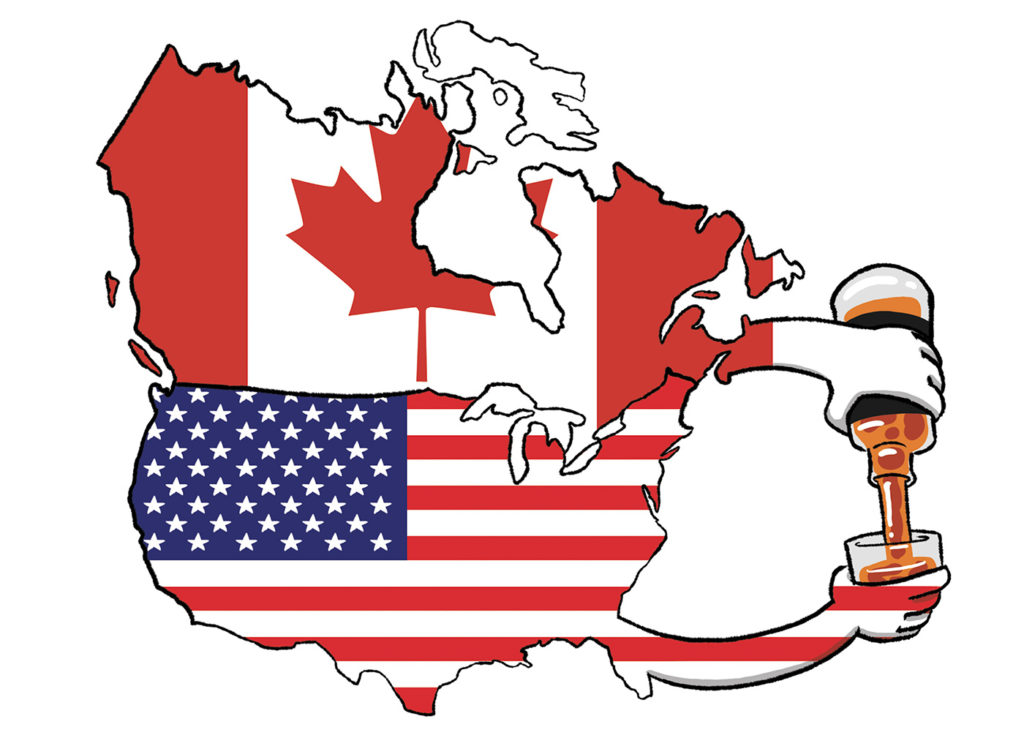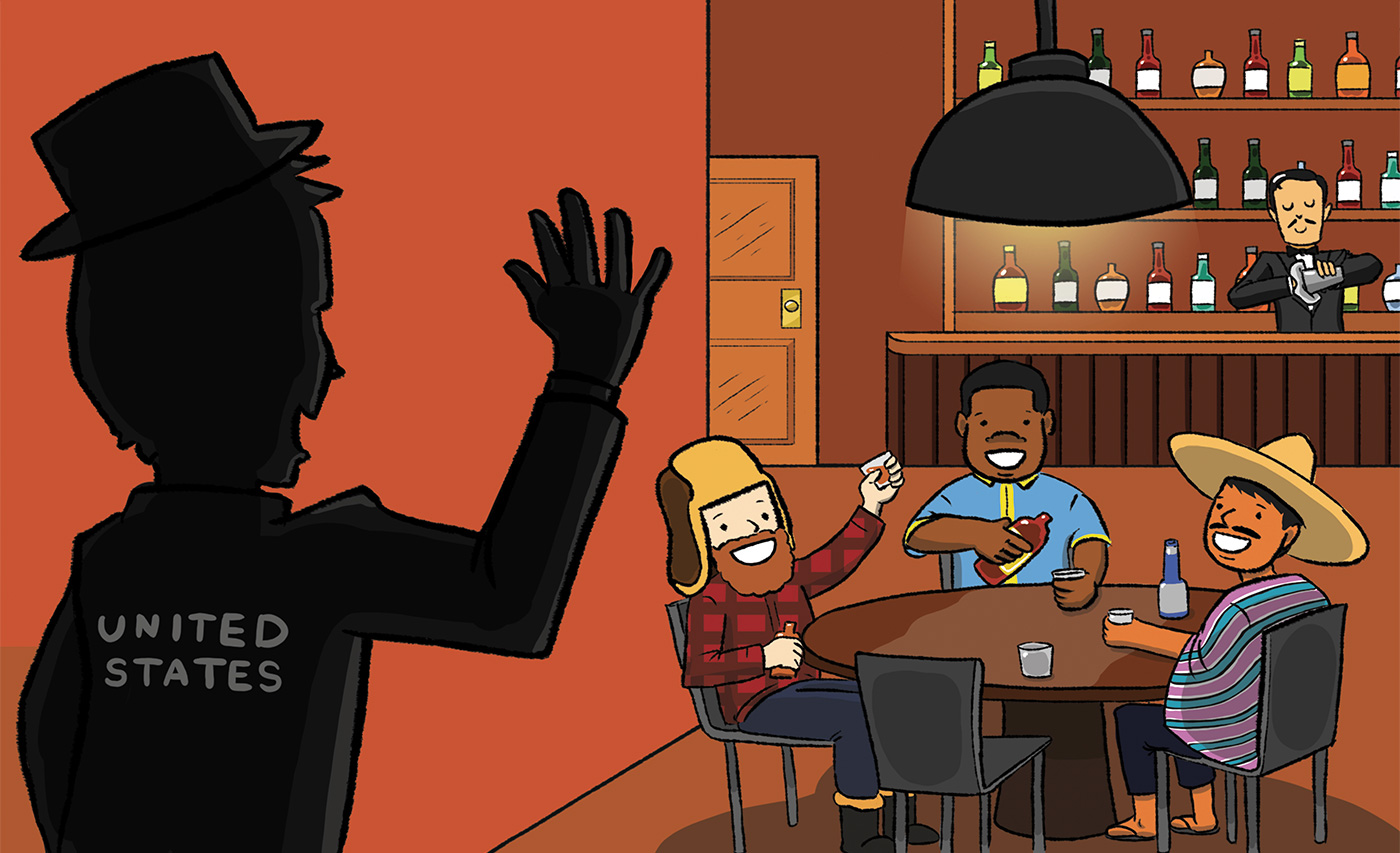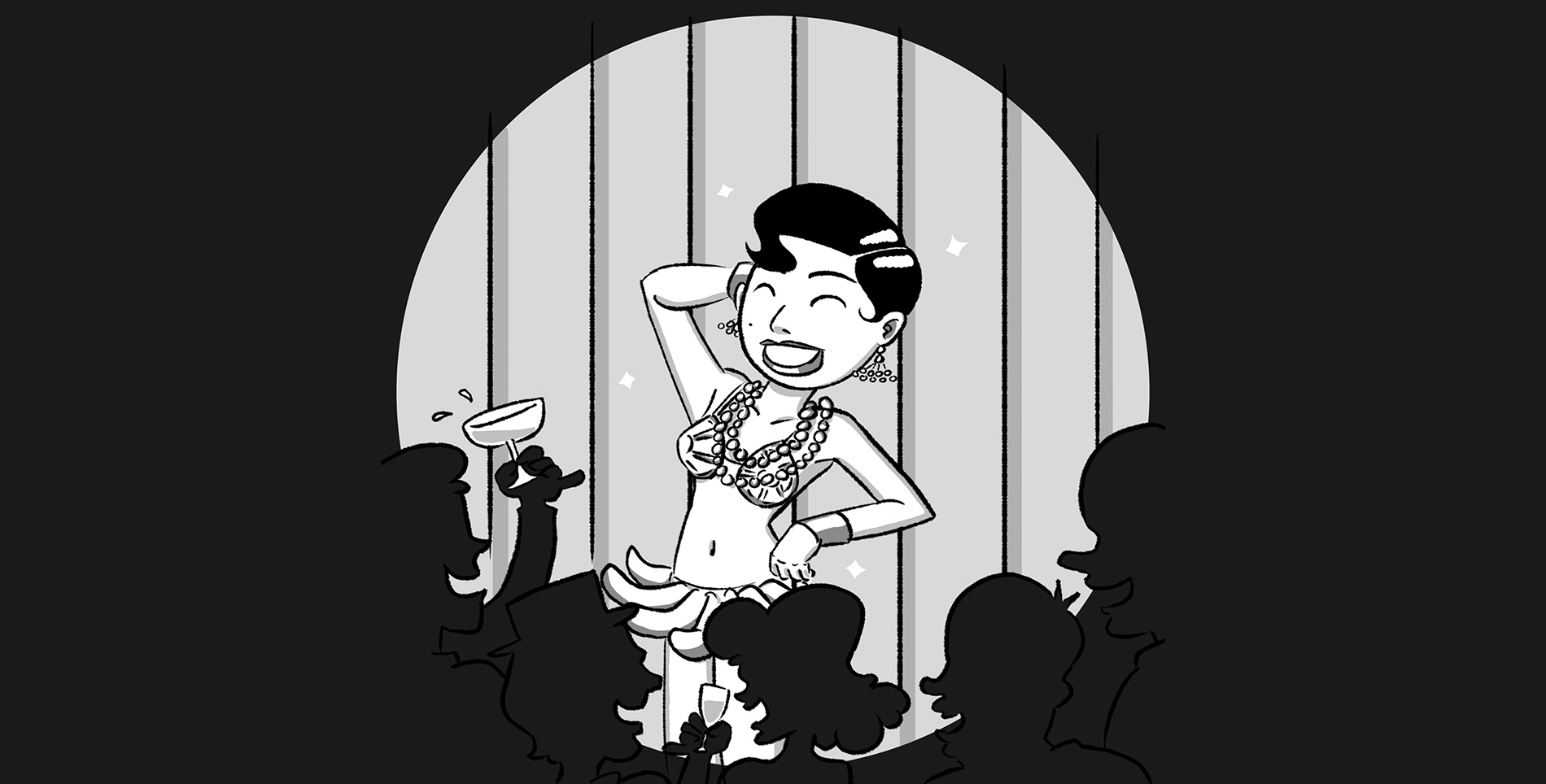Prohibition began in January 1920, but contrary to the best intentions of the Drys and the United States government, few quit drinking.
Reasons for this go deep, ranging from newfound self-expression to corrupted justice to the partitioned cities that defined America at the time. Collectively, these reasons help focus on perhaps the simplest explanation for why Prohibition failed: it’s very hard to impose a superficial morality, one that’s met from the top down with universal compliance (but that’s a case for a different article).
A second explanation is a little more neighborly: other countries, quite literally, kept our drink afloat. Regardless of the ultimate reason why, it wasn’t long before the demand for Prohibition alcohol grew greater than what moonshine, bathtub gin makers, and medicinal prescriptions were able to supply. Reinforcements had to be called in. And so they were—from across the border and beyond the sea.
As a result, the 1920s in America may have been a time of domestic restriction; but in a way, it was also a time of rapid foreign expansion—mixing and mingling spirits in more ways than one. Here’s a look at the allies who were quickest to top off our cup.

IN THE NORTH
Although Canada had its own teetotaler movement beginning in 1901, its Prohibition was much milder, waxing and waning as provinces locally opted dry in the lead up to the first World War. Its peak of support came during the war when many Canadians felt abstaining was patriotic duty and Ottawa enacted a production ban from 1918 until 1920.
Canadian temperance dwindled, however, as soldiers returned home expecting the same liberty they had won in the trenches. By 1921 America was officially dry while the Great White North had grown increasingly damp. Prohibition had been lifted in Quebec, the Yukon Territory, and British Columbia; and although other provinces still forbid the sale of alcohol, it was legal for licensed distilleries (of which Ontario had over forty-five) to produce and export—meaning ships could set out for customers “down south” under protection of Canadian law.
America’s dusty glasses proved a great deal for Canada since Yankee smugglers paid handsomely and assumed full risk of their illegal—and very frequent—imports. Three quarters of all alcohol supplied to the U.S. during Prohibition came from a spot known as the Detroit-Windsor “funnel,” a twenty-eight-mile stretch of Detroit River connecting Lake St. Clair and Lake Erie; from there Michigan all but kissed the Ontario coast.
The narrow river’s tiny islands and secret coves provided the perfect cover for trafficking contraband, legally produced in Windsor then ferried through a clever system of blinking lights and shrewd lookouts over to Detroit. When the river froze in winter, daring bootleggers would run, drive, or even skate across the ice pulling sleds of whisky behind them. Misjudge the weight and, yes, many would often fall through.
Once safely on American soil, Canadian whisky fueled local speakeasies, known as blind pigs, or caravanned down to Chicago, Cincinnati, or wherever else was able to pay. And this wasn’t just local to Michigan. While Ontario supplied the bulk of the Midwest, the leaky Canada-U.S. border benefited the West Coast via British Columbia and the East via Nova Scotia and St. Pierre’s Island (which is actually French).
But neither coast could compare with Detroit. Thousands of cases of Canadian product funneled the river every month, eventually earning the city “Whiskeytown” as its nickname. By 1929, illegal alcohol had become Detroit’s second largest industry, grossing $215 million a year. Only the city’s booming auto industry could beat that—and they had a lot of frozen cars to replace.

IN THE SOUTH
While Canada was seen as the go-to for ice skaters and a rising number of family-men-turned-trench-coat-smugglers, it was in the Caribbean and along the Atlantic coast where rum-running truly took off. Since most domestic-made liquor was either dangerously distilled from industrial alcohol or a watered down, medicinal version, consumers were willing to pay a premium if they could get their hands on the “real McCoy.”
Floridian skipper William McCoy—the namesake of that oft-used phrase—is credited as one of the first rum-runners, earning up to fifteen thousand dollars a trip once he discovered how easy it was to shuttle rum from Nassau to Savannah in hidden compartments under his boat. His ingenuity created a welcome boom for the Bahamian economy (by 1922, almost ten million quarts of rum had passed through Nassau destined for the U.S.) and also a lot of copycats. It wasn’t long before others starting following in McCoy’s tracks.
Ships carrying scotch, Irish whiskey, and French champagne en route from Europe began anchoring three miles from shore, just outside U.S. jurisdiction. From there, American “contact boats” would approach at night and toss bundles of cash aboard for cases, outfitting their dinghies with plane engines to out-speed patrol boats as they made their way to land. Waiting getaway cars would then deliver name-brand alcohol to New York, Boston, and Atlantic City with similarly souped-up engines (that would later evolve into stock-car racing and the Nascar industry we know today).
Known as “Rum Row,” this stretch of anchored ships ran from Florida’s tip up to Maine, with concentrated sections along the New Jersey and New York coasts. Whether coordinated pick-ups or full-on bartering, smugglers engaged in all sorts of deals to get the best of foreign booze available. As Prohibition wore on, these floating marketplaces grew in number and in risk—pirates would frequently overtake “mother ships” and shoot-outs at sea were a regular occurrence. Although the Coast Guard added more and faster boats, and even increased anchoring distance from three to twelves miles, it did little to slow the popularity of Rum Row; smugglers just became more inventive. Dumping cargo was a common practice, either to avoid capture or as part of a concerted effort to float cases ashore to clients. Many locals would wake early in hopes of fishing out stray bottles, proving that few were bound to enforce Prohibition when capitalizing on it washed up at their feet.
Texas is a notable example. While port cities like Galveston could take advantage of rum-running in the gulf, southwestern border towns found their own ways to get a drink—and make money off of those who wanted one too. Mexico never had Prohibition, so during the 1920s the country became a hot-spot for both American distillers looking to re-establish business and club-hoppers craving a good time. After all, why risk smuggling when you could hop the line for a legal beer? Across the border from El Paso, Juarez grew especially popular thanks to locally-advertised “Mexico Tours,” supported by the chamber of commerce. Everyone from tourists to Texan politicians would sign up for what was, really, a guise to drink.
And yet, while on the surface Prohibition appeared to strengthen U.S. and Mexico relations, there’s an often overlooked effect that this supply and demand created: the trade of vice. Some argue that Prohibition laid the framework for what would eventually become modern-day drug cartels; doing business on the basis of a (lucrative) illegal substance forms a bond that’s hard to break.
AND THEN THERE’S PARIS
No matter where one sides when it comes to alcohol, the glittering façade of 1920s Paris has an allure. During Prohibition, many Americans thought so too, and as both coasts welcomed in their bottle-sized imports by the case, they also exported something larger: artists, creatives and the progressive thought later known as “Lost.”
Characterized by literary greats including Ernest Hemingway, F. Scott Fitzgerald and Gertrude Stein, the “Lost Generation” was coined by Stein to describe fellow American expats who moved to Paris after World War I. As the ‘20s roared in, America’s factions of politics, religion, ideology, and even fashion, had an almost numbing effect on those who had fought in the Great War. No longer at ease with normal, but finding material pursuits vain, they took to Paris—a city also undergoing post-war rebirth but with legal drinks to boot.
Additionally, Paris was also quicker to embrace the diversity that was causing severe and violent distinctions in the States. As a militant enforcer of temperance, the Ku Klux Klan rose to new power during Prohibition, at one point having more members than the entire American Methodist church. Because of this, Paris gained one of its star faces of the “Les Années folles” or Crazy Years: Josephine Baker, an African-American singer and dancer who found new freedom—and equality—in leaving St. Louis for Paris. Her playful attitude and powerful voice, dressed in risqué costume, soon became the poster child for the jazz music quickly captivating French audiences. Baker epitomized turning repression into expression: a hallmark of Americans abroad at the time.
And really, a hallmark of Prohibition back home too. Despite its far-reaching attempts to control alcohol and subjugate a certain kind of social life, in the end Prohibition only ramped up creativity and the support that would eventually overturn it.
Stifle one spirit and another will find its way.
——
References and Research
- Coyote, P., Clarkson, P., Danner, B., Giamatti, P., Hanks, T., Lithgow, J., Platt, O., … PBS Home Video. (2011). Prohibition. Culver City, Calif: PBS Home Video.
- Hallowell, Gerald. “Prohibition in Canada.” The Canadian Encyclopedia. N.p., n.d. Web. 25 Apr. 2017.
- Fetherling, George. “Prohibition in U.S. Led to Exciting times in Canada.”Www.vancouversun.com. N.p., 01 Feb. 2015. Web. 25 Apr. 2017.
- “Subject Focus: The Windsor-Detroit Funnel: Prohibition in Detroit.” Walter P. Reuther Library. N.p., n.d. Web. 26 Apr. 2017.
- Edwards, Chris. The Times – Mobsters, Mayhem & Murder. N.p., n.d. Web. 28 Apr. 2017.
- Jankowski, Nicole. “Detroit Returns To Its Prohibition-Era Whiskeytown Roots And Finds New Life.” NPR. NPR, 30 Nov. 2016. Web. 28 Apr. 2017.
- Cmassey. “Detroit during Prohibition: Bootlegger’s Dream Town.” Detroit News. N.p., 09 Dec. 2015. Web. 3 May 2017.
- “Rum Runners Delivered the Good Stuff to America’s Speakeasies.” Prohibition: An Interactive History. N.p., n.d. Web. 3 May 2017.
- “Indomitable Spirits: Prohibition in the United States.” Omeka RSS. N.p., n.d. Web. 6 May 2017.
- “Prohibition in the Borderland.” Texas PBS. N.p., n.d. Web. 6 May 2017.
- “A Short Biography Of Josephine Baker.” Odyssey. N.p., 15 Oct. 2015. Web. 7 May 2017.







Our comments section is for members only.
Join today to gain exclusive access.